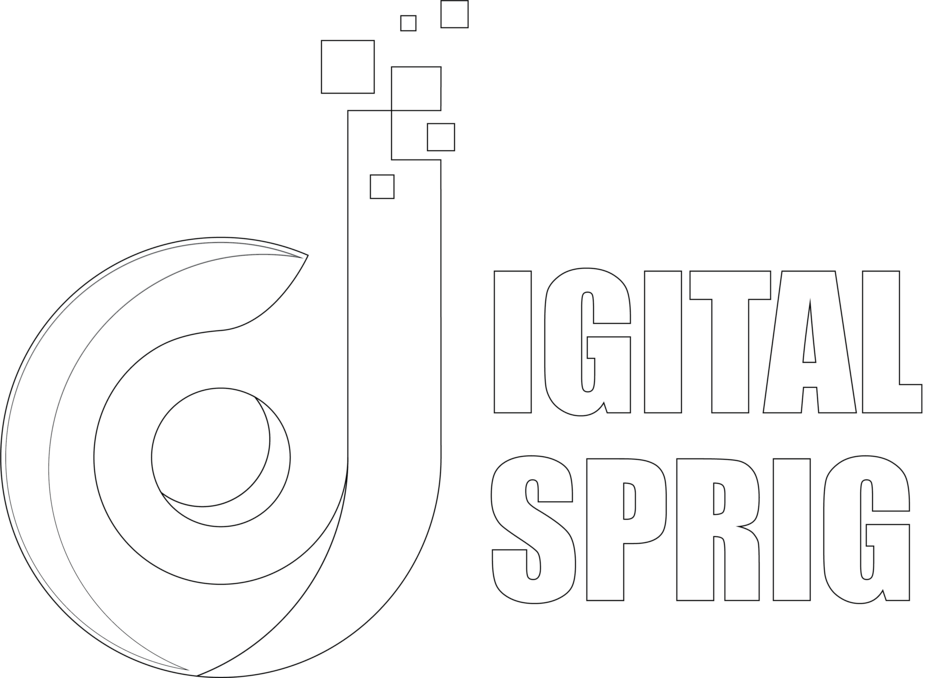You hold the power to transform your marketing efforts with engaging content that captivates your audience. In this guide, you will discover effective strategies and best practices to create content that not only attracts viewers but also keeps them coming back for more. We will explore key elements that make your content resonate, the dangerous pitfalls to avoid, and the positive impacts that follow when you get it right. Let’s dive in and elevate your content marketing game to new heights.
Key Takeaways:
- Understand your audience’s needs and preferences to create content that resonates and engages effectively.
- Utilize various formats like videos, infographics, and blogs to diversify content delivery and appeal to different learning styles.
- Incorporate storytelling techniques to make your content more relatable and memorable, fostering a deeper connection with your audience.
Understanding Content Marketing
Before entering into content marketing, it’s necessary to grasp its definition and purpose. Content marketing is a strategic approach aimed at creating and distributing valuable, relevant content to attract and engage a defined audience. By doing so, you build trust and drive profitable customer action, ensuring that your messaging stands out in a crowded marketplace.
Types of Content Marketing
Content marketing encompasses various formats, each catering to different audience needs and preferences. Below is a brief overview of the primary types:
| Blog Posts | Engaging articles that inform and educate your audience. |
| Videos | Visual content that captures attention quickly through storytelling. |
| Infographics | Visual representations of information that simplify complex data. |
| Podcasts | Audio content that allows for on-the-go learning and engagement. |
| Social Media Posts | Short, impactful updates that foster interaction and sharing. |
After exploring these options, you can choose the formats that resonate with your audience.
Key Factors for Success
Little things can make a giant difference in your content marketing efforts. Focus on understanding your target audience, establishing clear objectives, and maintaining a consistent brand voice. Each of these factors plays a big role in your content’s effectiveness and reach.
- Audience Research: Know who you are targeting.
- Content Strategy: Plan your content effectively.
- Consistency: Keep a regular publishing schedule.
- Quality: Prioritize well-researched and engaging content.
- Promotion: Share your content widely across all platforms.
Thou shall embrace these elements to witness impressive results in your marketing endeavors.
This understanding of key factors empowers you to create content that aligns with your audience’s needs. By focusing on listener engagement, branding consistency, and performance analysis, you enhance your chances of success. Additionally, crafting content that speaks to your audience while integrating their feedback is vital for improvement. Engagement metrics and consistent quality will keep your strategy on the right path. Thou will see growth and engagement flourish as you implement these strategies.
Tips for Crafting Engaging Content
Now that you’ve set the stage, focus on these key tips to create engaging content:
- Understand your audience
- Utilize storytelling techniques
- Incorporate visuals
- Encourage interaction
- Maintain a consistent voice
The more you apply these strategies, the more compelling your content will become. For comprehensive insights, check out The Ultimate Guide for Easy and Effective Content Creation.
Audience Research
There’s no substitute for understanding your audience. By conducting thorough audience research, you can identify their interests, preferences, and pain points, ensuring your content resonates. Utilize surveys, polls, and social media analytics to gather insights that inform your content strategy.
Storytelling Techniques
While crafting your content, storytelling can transform dry information into relatable narratives. By weaving in elements like characters, conflict, and resolution, you can engage your audience on a deeper level, making your message memorable.
Crafting an engaging story involves using relatable characters that your audience can connect with, presenting a conflict they can empathize with, and navigating them toward a rewarding resolution. This approach captivates your audience’s attention and encourages them to stay invested in your content. Use descriptive language to evoke emotions and create a vivid experience, ensuring that your storytelling not only informs but also resonates significantly with your audience.

The Step-by-Step Guide to Creating Content
All content creation should follow a systematic approach to ensure effectiveness and engagement. The following table breaks down the crucial steps:
| Step | Description |
| 1. Research | Understand your audience and industry trends. |
| 2. Planning | Create a content calendar and define your goals. |
| 3. Creation | Develop high-quality, engaging content. |
| 4. Distribution | Share your content strategically across channels. |
| 5. Analysis | Monitor performance and refine your strategy. |
Planning Your Content Strategy
If you want to create a successful content strategy, begin by identifying your target audience and their needs. Outline your key objectives, what types of content you’ll produce, and how often you’ll publish. This strategic groundwork helps align your content with your brand message, ensuring that your efforts resonate and engage effectively.
Creating and Distributing Content
One of the major components of your content marketing effort involves not just creating but also sharing your content effectively. Make sure to tailor your content form—whether blog posts, videos, or infographics—to suit your audience’s preferences and the platforms you’re using. Employ strong keywords to enhance SEO visibility and encourage engagement through sharing on social media channels.
Content needs to be visually appealing and informative to capture your audience’s attention. Focus on storytelling and delivering value with each piece you create. Use strong visuals and clear calls-to-action to encourage interaction and sharing. Equally, be mindful of distribution timing and channel selection to maximize reach and impact. Engaging your audience consistently is the key to building a loyal following and enhancing brand awareness.
Pros and Cons of Different Content Types
To effectively choose your content strategy, it’s imperative to weigh the pros and cons of each type. Below is a summary that can help guide your decisions.
| Content Type | Pros & Cons |
|---|---|
| Blogs & Articles | Pro: In-depth information; Con: High competition |
| Videos | Pro: Engaging format; Con: Time-consuming to produce |
| Infographics | Pro: Visually appealing; Con: Limited text |
| Podcasts | Pro: Portable; Con: Requires strong audio editing skills |
| Case Studies | Pro: Builds credibility; Con: Time-consuming to gather data |
Blogs and Articles
An effective way to showcase your expertise, blogs and articles allow you to probe deep into topics pertinent to your audience. They can improve your SEO, attract organic traffic, and help establish your authority in your niche.
Videos and Infographics
Types of visual content like videos and infographics can capture your audience’s attention quickly and effectively. These formats are highly shareable, making them ideal for social media. However, they can require more resources for production and editing.
The impact of videos is undeniable; they can convey messages that text alone might not achieve. Additionally, infographics summarize complex data in an easily digestible format, appealing to both visual learners and those who prefer concise information. However, investing time and effort into creating high-quality content is necessary to maintain viewer interest and effectively communicate your message.
Measuring Content Marketing Effectiveness
Not properly measuring your content marketing effectiveness can lead to missed opportunities for growth and improvement. You must understand how your content is performing so that you can make informed decisions and optimize future strategies. Identifying the right metrics is key to unlocking the potential of your content efforts and ensuring they align with your marketing goals.
Key Performance Indicators (KPIs)
Measuring the success of your content marketing hinges on well-defined Key Performance Indicators (KPIs). These indicators can include metrics such as website traffic, engagement rates, lead conversions, and social shares. By tracking these KPIs, you can gain valuable insights into which pieces of content resonate most with your audience and inform future content strategy effectively.
Tools and Techniques for Analysis
If you want to successfully analyze your content’s performance, leveraging the right tools and techniques is necessary. Tools like Google Analytics, SEMrush, and Hootsuite can provide in-depth data regarding your audience behavior and content engagement. Additionally, employing user surveys can give you qualitative insights that complement your quantitative data.
KPIs serve as your compass in content marketing analysis, guiding you to the most effective and engaging content strategies. Tools such as Google Analytics allow you to track web traffic and user behavior, while social media analytics measure engagement and reach. Employing these resources enables you to assess your content’s performance accurately and adaptively adjust your approach based on real-time feedback.
Common Mistakes to Avoid
For anyone seeking to enhance their content marketing strategy, avoiding common pitfalls is key. Neglecting to identify and correct these issues can hinder your engagement levels and reduce overall effectiveness. By steering clear of these mistakes, you can craft content that resonates and drives results.
Inconsistent Messaging
Clearly, your brand’s messaging must remain consistent across all platforms and formats. Inconsistency can confuse your audience and dilute your brand identity. To maintain engagement, ensure that your voice, style, and key messages align seamlessly in every piece of content you produce.
Ignoring Audience Feedback
While it might be tempting to dismiss negative feedback or overlook audience comments, doing so can severely impact your content marketing success. Common mistakes include failing to listen to your audience’s preferences and suggestions, which can lead to a disconnect between what you offer and what they want. Acknowledging and integrating audience feedback not only fosters a stronger relationship with your audience but also enhances your content’s relevance and effectiveness. By encouraging open dialogue and making adjustments based on their input, you can create more valuable content that resonates, ultimately boosting engagement and loyalty.
To wrap up
To wrap up, creating engaging content marketing is all about understanding your audience, employing a strategic approach, and consistently delivering value. By leveraging storytelling, optimizing for various platforms, and analyzing your performance, you can significantly enhance your content’s impact. Focus on building authentic connections with your audience and adapting your strategies based on feedback and trends. With these insights, you are well-equipped to elevate your content marketing game and generate meaningful results for your brand.
FAQ
Q: What are the key components of engaging content marketing?
A: Engaging content marketing incorporates several vital elements: understanding your target audience, crafting compelling and relevant topics, utilizing various formats such as blogs, videos, and infographics, and promoting content through appropriate channels. It also involves consistent storytelling, establishing a brand voice, and encouraging interaction from your audience through calls to action and social media engagement.
Q: How can I measure the effectiveness of my content marketing efforts?
A: Effectiveness can be gauged through several metrics including website traffic, engagement rates on social media, conversion rates, and customer feedback. Utilizing tools like Google Analytics will help you track page views, bounce rates, and time spent on pages. Social media insights can reveal how well your content resonates with your audience based on shares, likes, and comments. Additionally, conducting surveys and polls can provide direct feedback on content performance.
Q: What strategies can I implement to keep my content fresh and relevant?
A: To maintain freshness in your content, consider conducting regular audience surveys to learn their interests and preferences. Stay updated with industry trends and incorporate timely topics into your content plan. Experiment with different content formats, and run seasonal or themed campaigns to keep your audience engaged. Additionally, collaborating with industry influencers or guest authors can introduce new perspectives and enhance your content variety.

